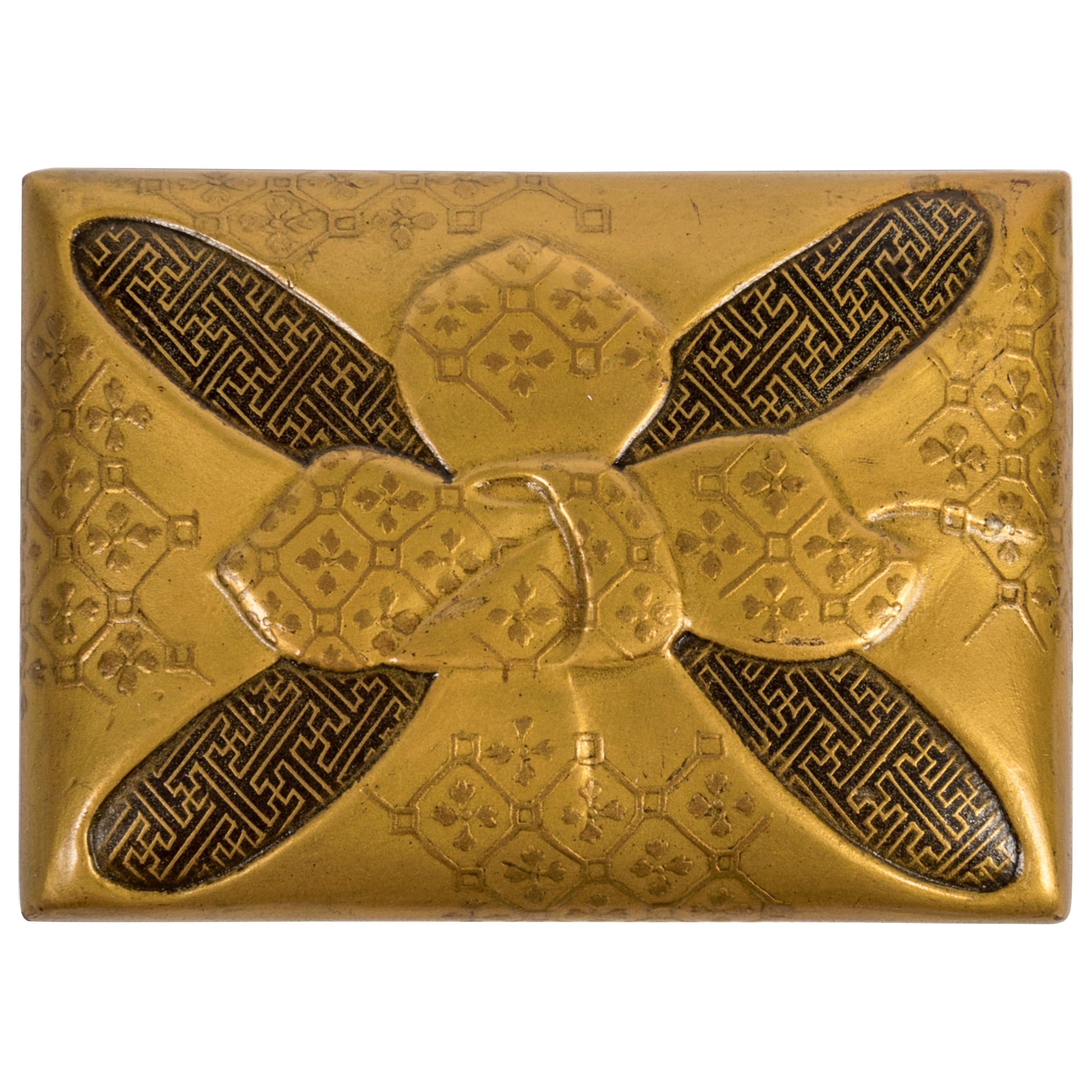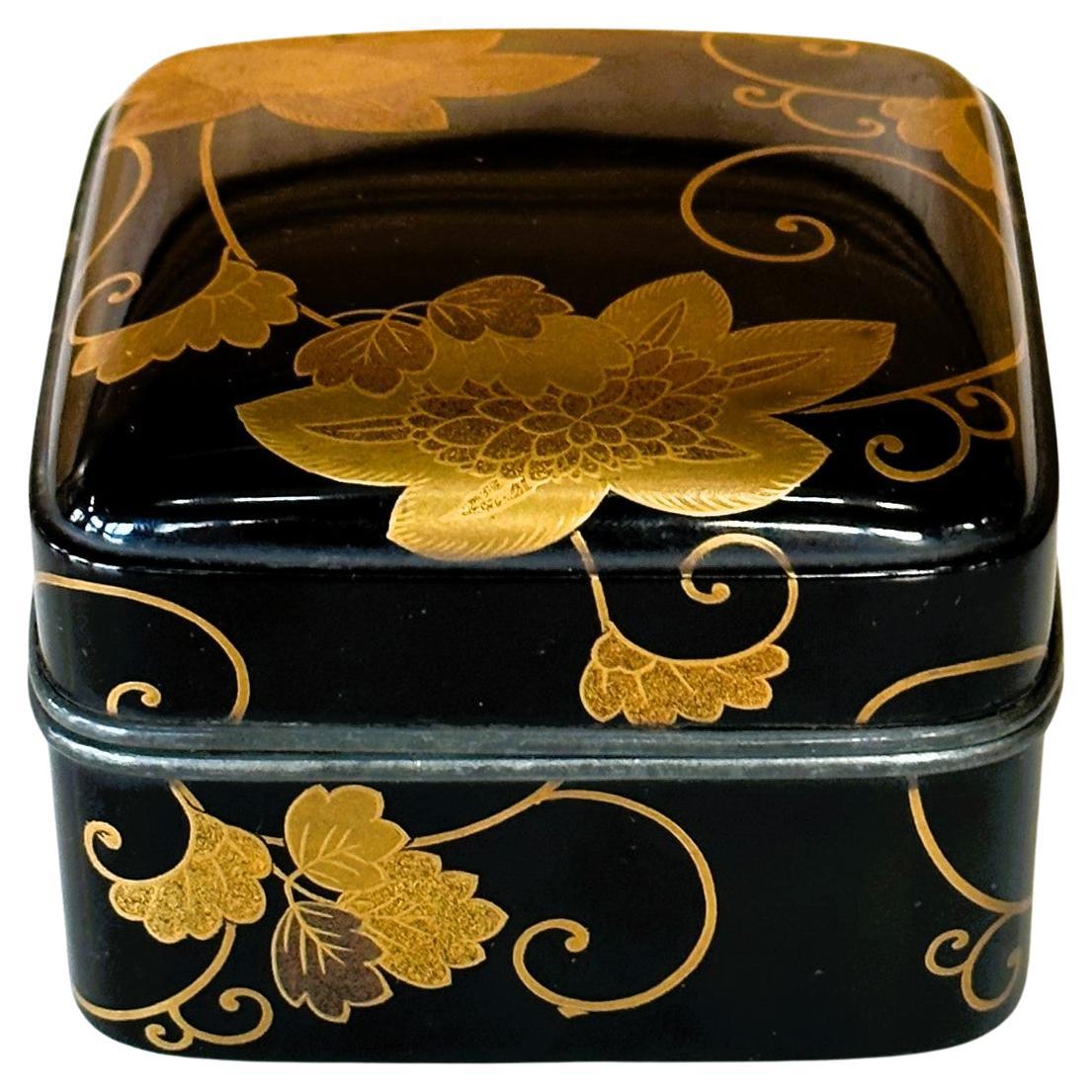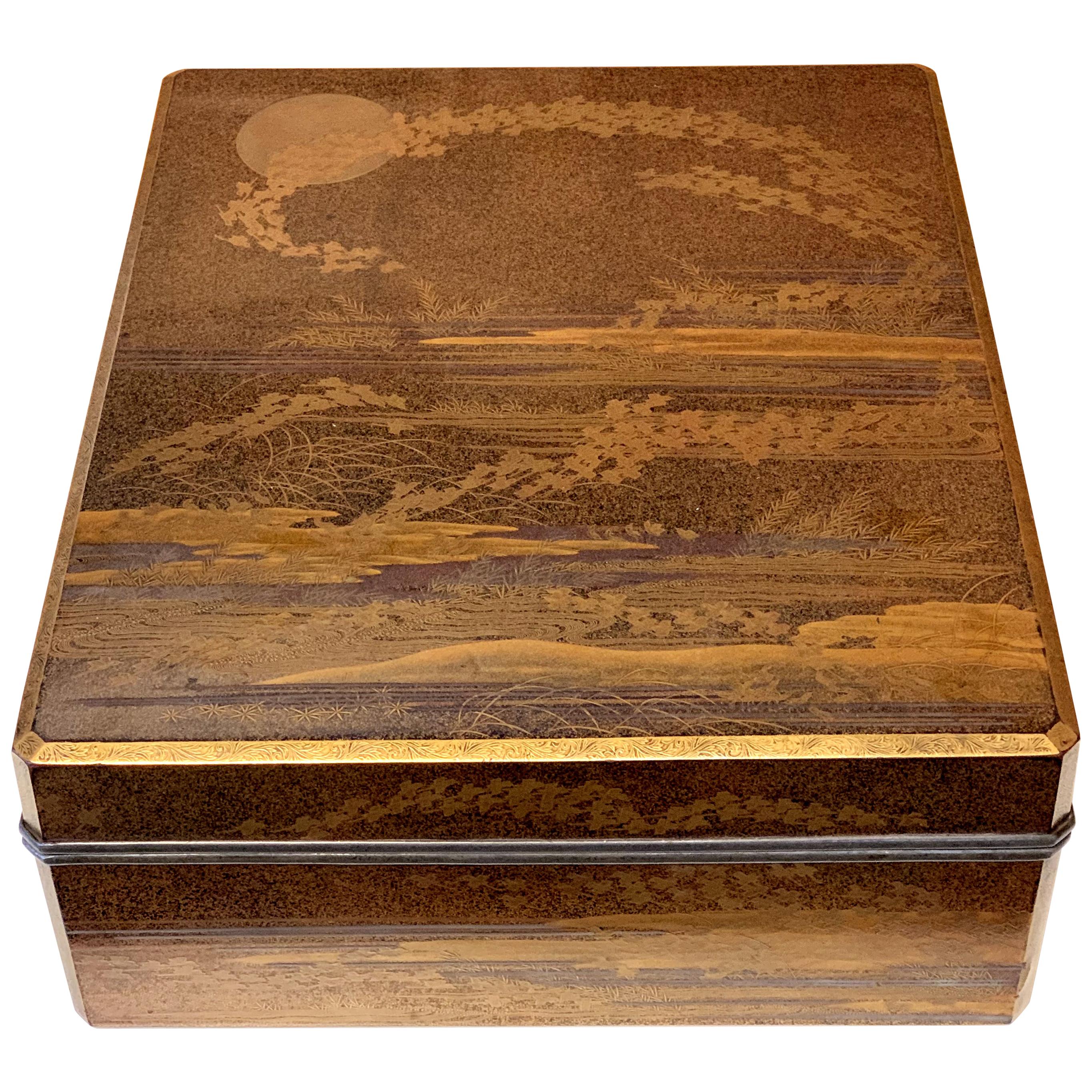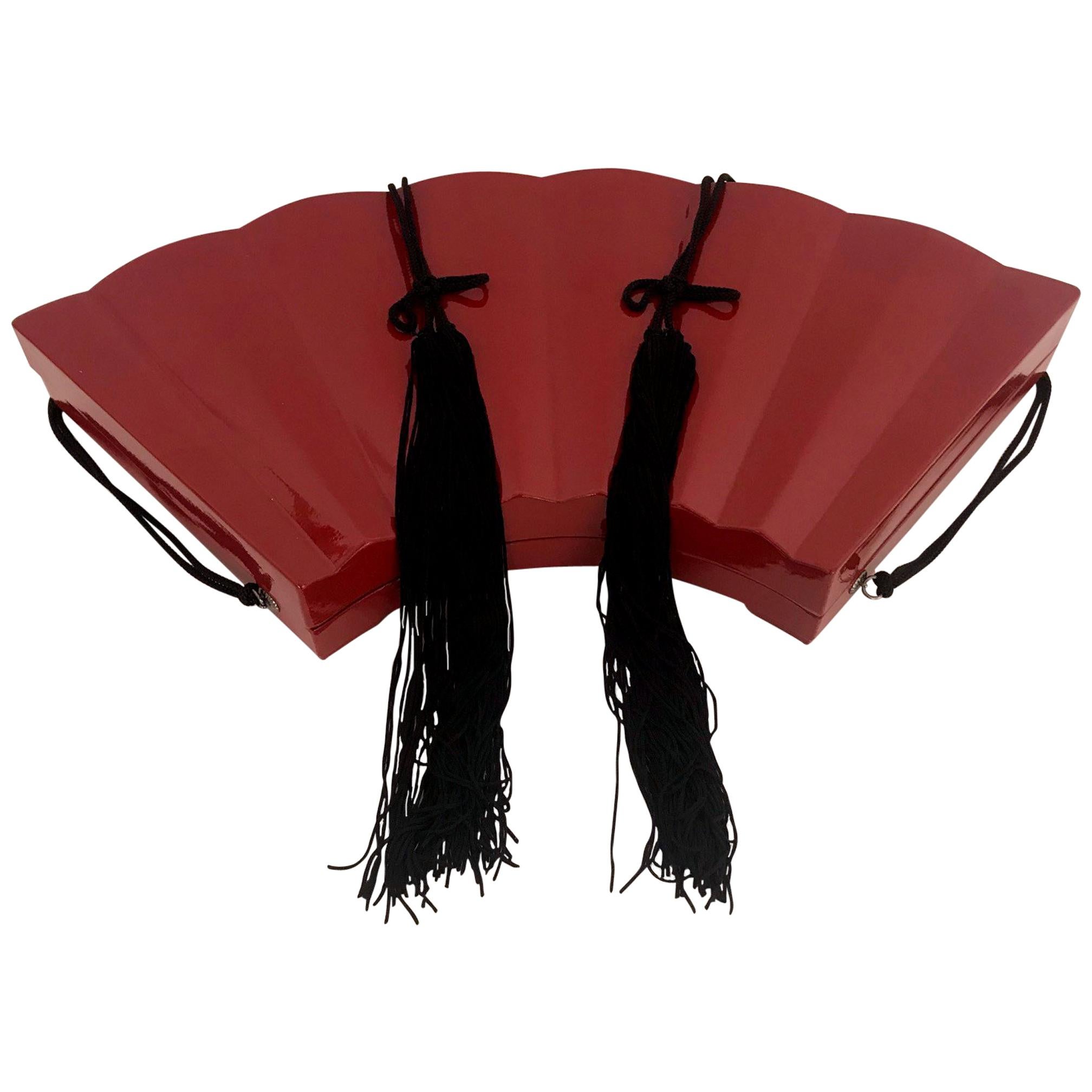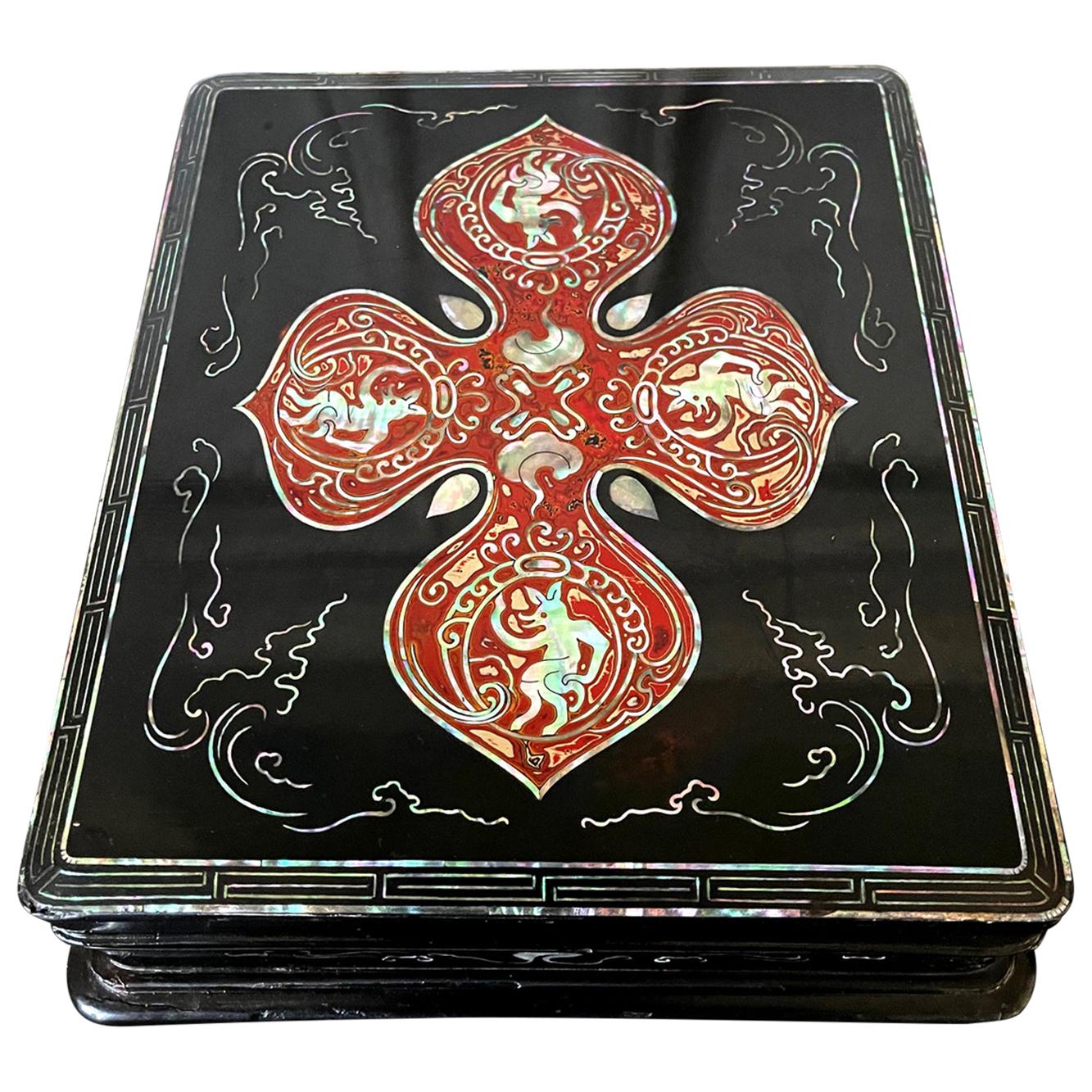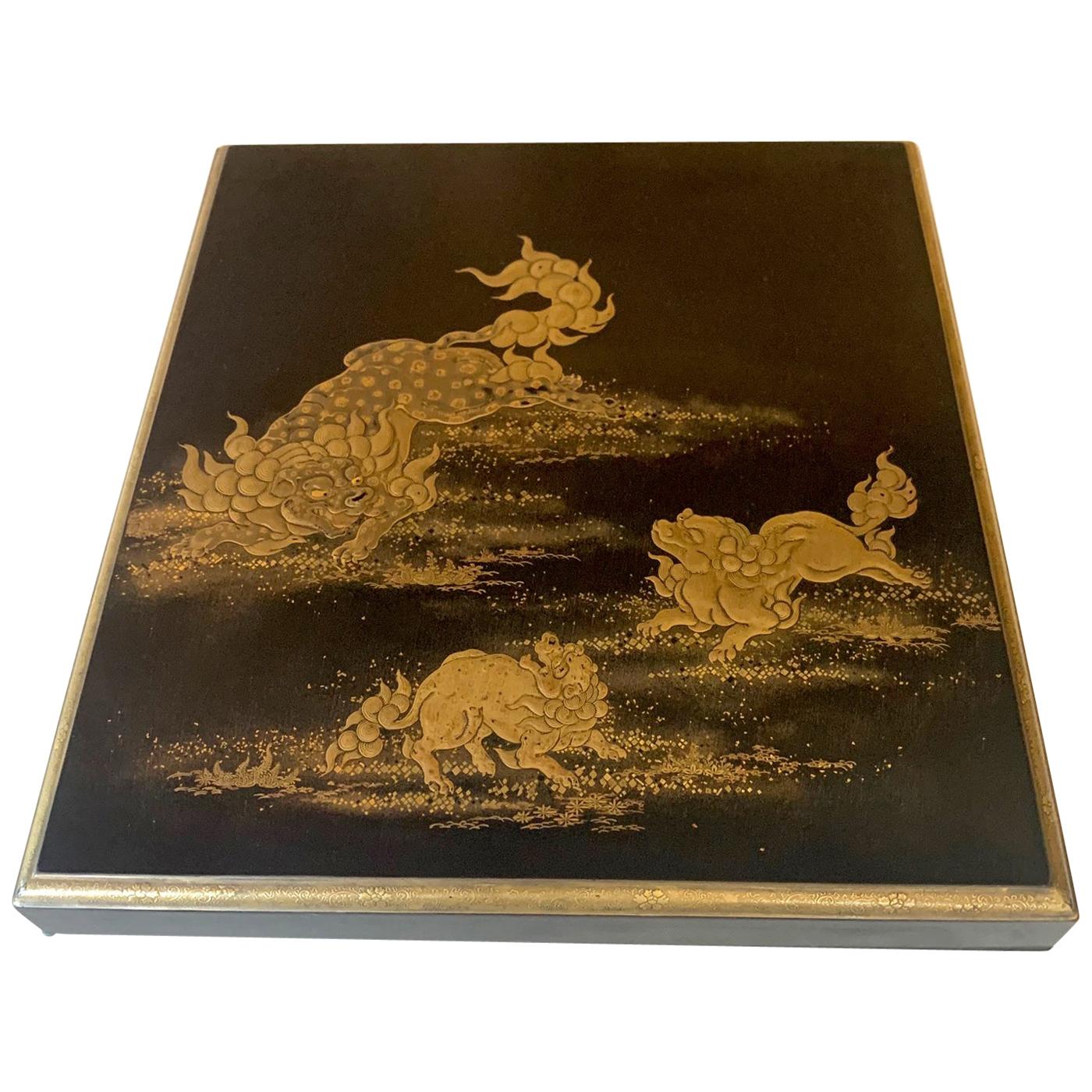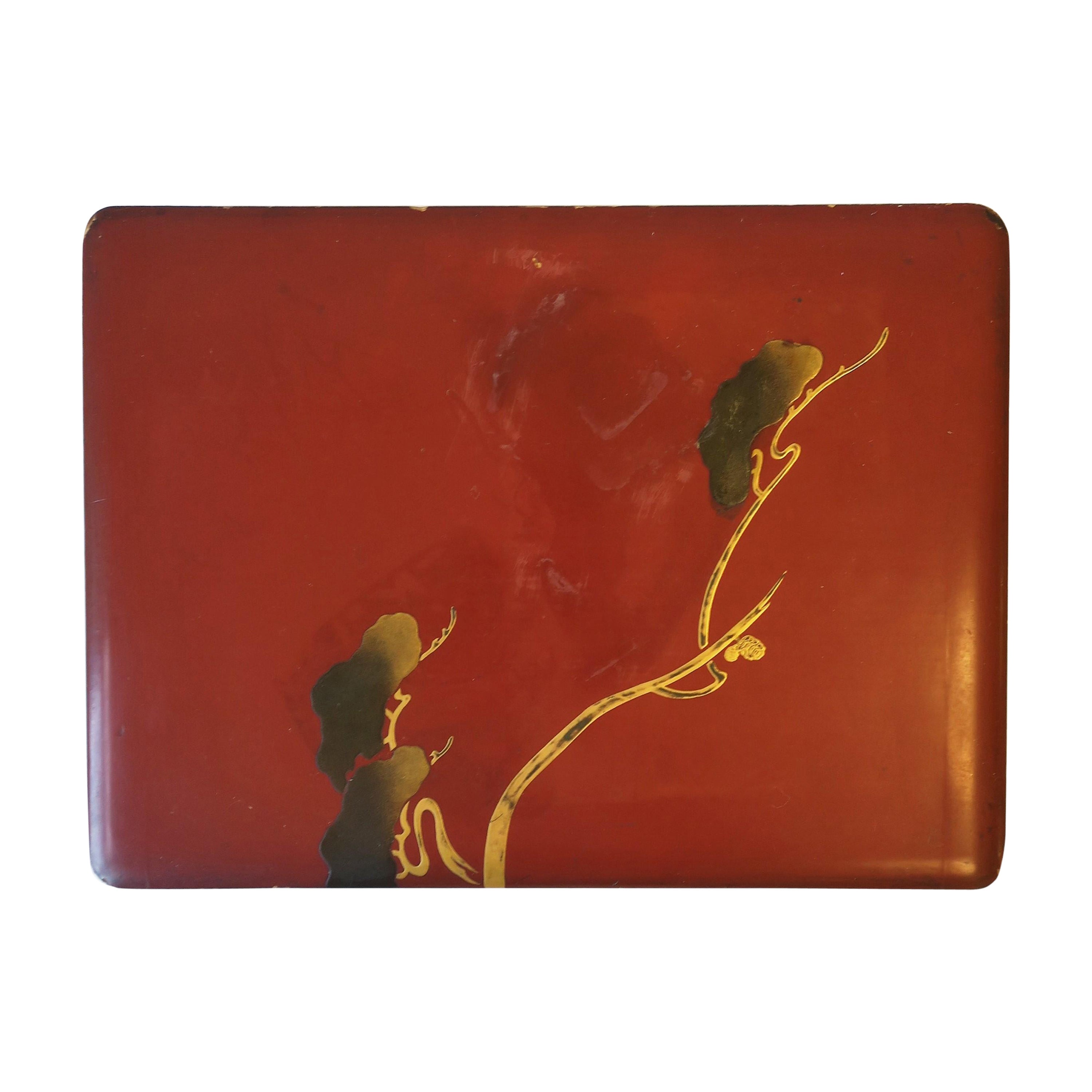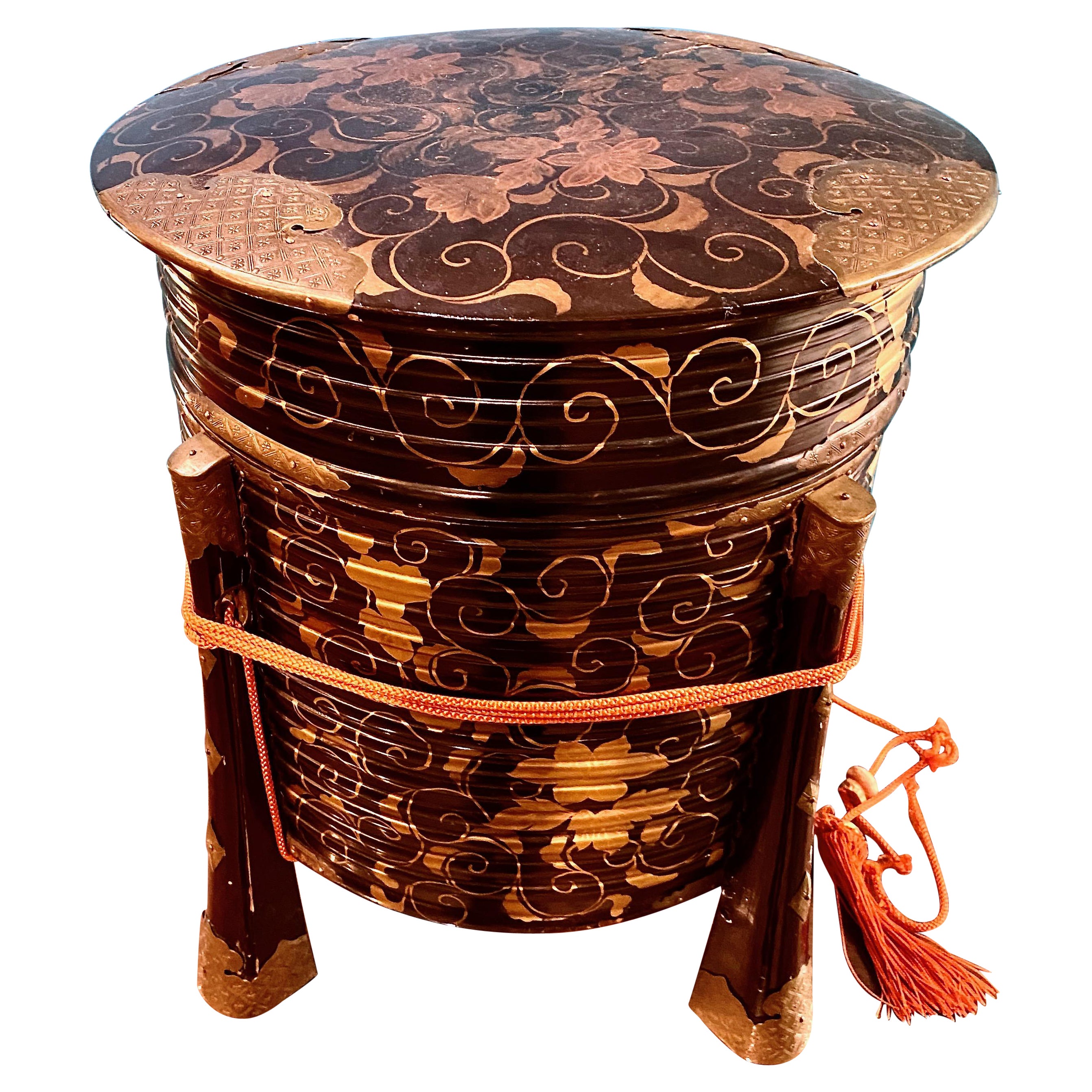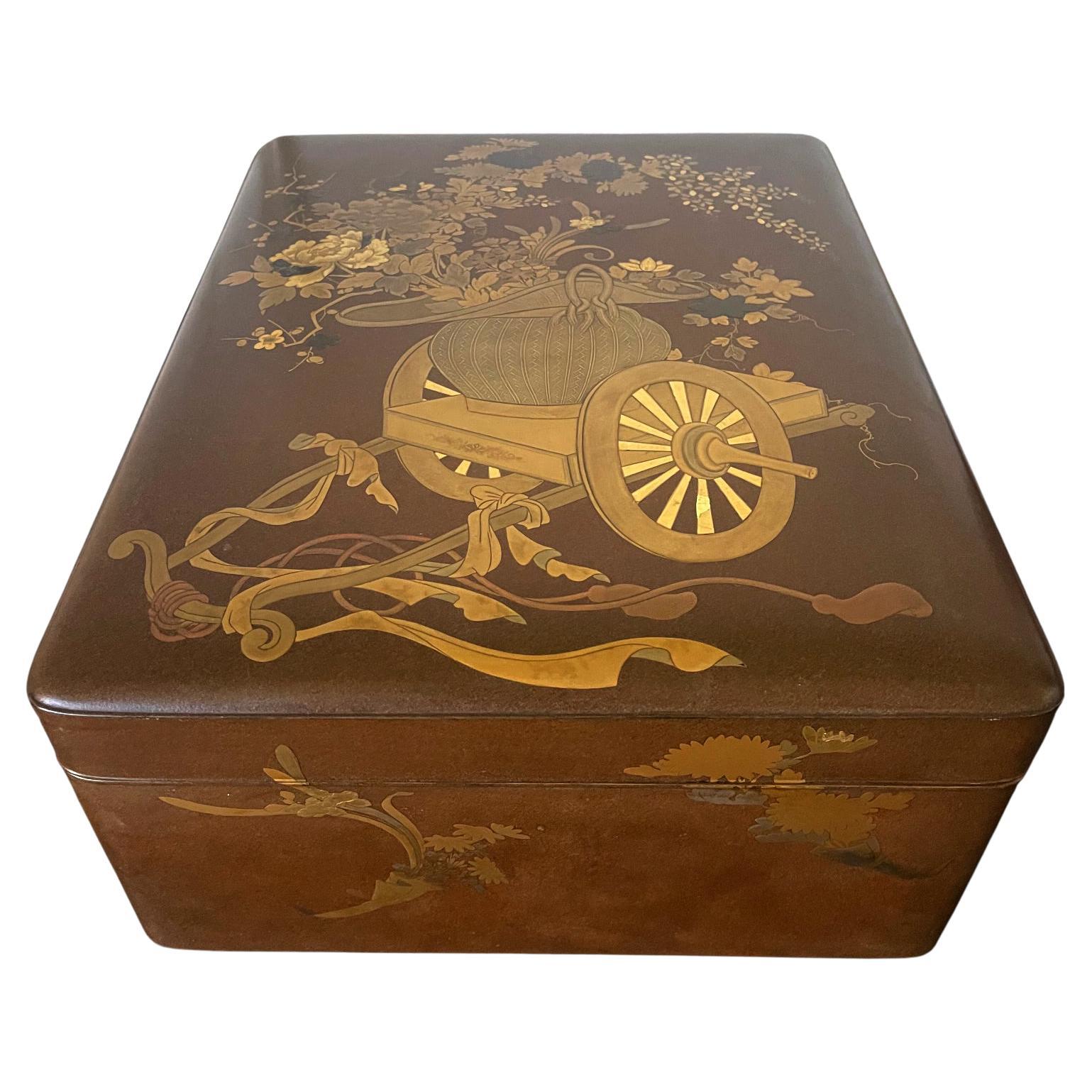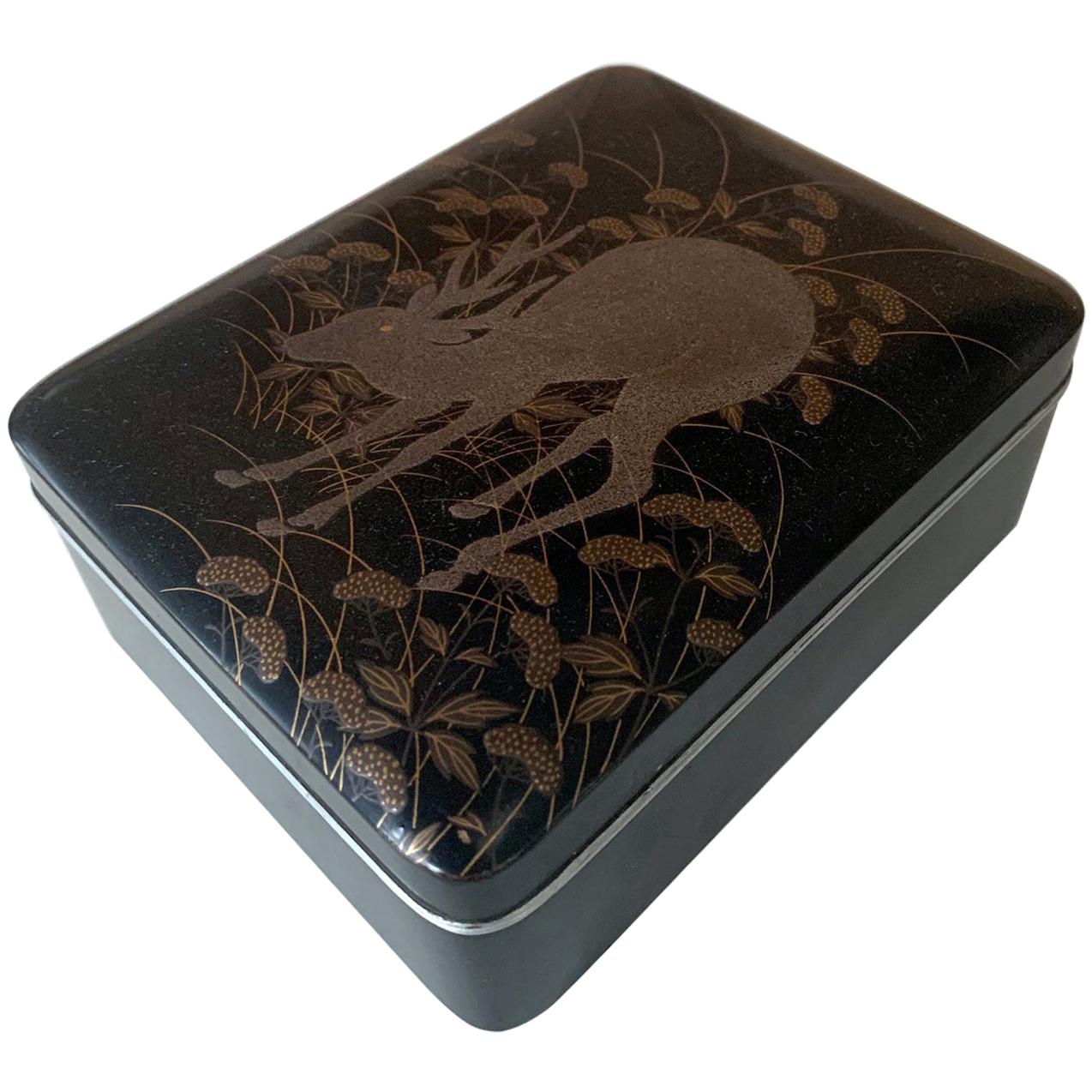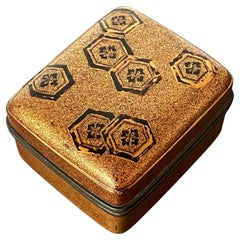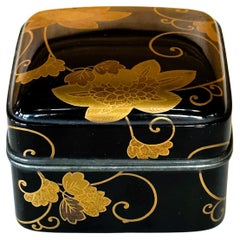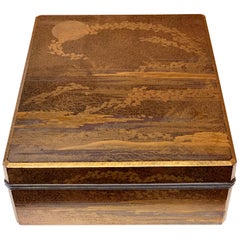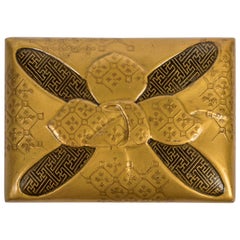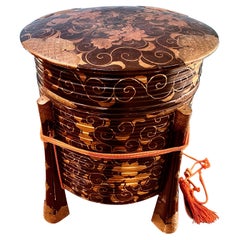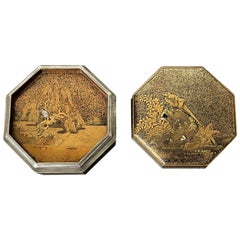
Exquisite Early Japanese Lacquer Kobako Box with Insert Tray
View Similar Items
Want more images or videos?
Request additional images or videos from the seller
1 of 17
Exquisite Early Japanese Lacquer Kobako Box with Insert Tray
About the Item
- Dimensions:Height: 2 in (5.08 cm)Width: 4 in (10.16 cm)Length: 2 in (5.08 cm)
- Style:Japonisme (Of the Period)
- Materials and Techniques:
- Place of Origin:
- Period:
- Date of Manufacture:16th-17th Century
- Condition:Wear consistent with age and use. Fine antique condition, minor wear, mostly on the base, some old losses of kirigane inlays as shown. Oxidation on the metal.
- Seller Location:Atlanta, GA
- Reference Number:1stDibs: LU945022292422
About the Seller
5.0
Platinum Seller
These expertly vetted sellers are 1stDibs' most experienced sellers and are rated highest by our customers.
Established in 2006
1stDibs seller since 2010
480 sales on 1stDibs
More From This SellerView All
- Antique Japanese Lacquered Incense Box Kobako Ex-Christie'sLocated in Atlanta, GAAn old Japanese lacquered small box likely used to contain incense powder called Kobako, circa Momoyama to early Edo period (16-17th century). The rectangular form box with a fitted ...Category
Antique 17th Century Japanese Japonisme Lacquer
MaterialsLead
- Antique Japanese Lacquered Incense Box Kobako in Kodaiji StyleLocated in Atlanta, GAAn antique lacquered small box that was likely used to contain incense powder (it is called Kobako in Japanese), circa early to mid-19th century of the Edo...Category
Antique 19th Century Japanese Edo Lacquer
MaterialsWood, Lacquer
- Large Japanese Lacquer Box Early Edo Period Ex-Christie'sLocated in Atlanta, GAA large lacquer Ryoshibako (Paper box in Japanese) finely decorated with Maki-e circa 17th century early Edo period. The box is of an impressive size and was used to store paper documents. Both sides of the lid were elaborately decorated with maki-e and the edge was befitted with lead rim, an early practice before the silver rim became common later. The interior and base were finished in Nashiji. The night scene on top surface of the lid depicts flocks of chidoris flying in formation from a sea shore swaying with reeds under a full moon, using hiramaki-e in both gold and silver. Ribbons of clouds were achieved with different densities of gold powder. The underside, in contrast, shows a crescent moon in takamakie-e above the sea with ferns and reeds. Chidoris, the plovers, are symbolic in Japanese culture as "thousands of blessings" and longevity. The Namichidori, the pattern in which the chidori flies in the nami (wave) represents the eternal love and safety of couples and families. For detailed references on the historical background and the use of chidoris on lacquerware, see the reference below. This very lacquer box was featured for sale as lot 339 in Christie's London Sale Japanese Art...Category
Antique 17th Century Japanese Japonisme Lacquer
MaterialsWood, Lacquer
- Japanese Lacquer Ware Fan-Shaped Box with CompartmentsLocated in Atlanta, GAA Japanese fan-shaped lacquer box with tassels, red exterior with slightly scalloped cover. The interior is fitted with seven smaller fan-shaped trays ...Category
20th Century Japanese Japonisme Lacquer
MaterialsLacquer
- Unusual Japanese Lacquer Inkstone Box with MOP InlaysLocated in Atlanta, GAA Japanese black lacquer box with mother of pearl inlays circa early 20th century, end of Meiji period. It was likely to be used to store inkstone or other scholarly items. The piece displays several interesting characteristics that appear puzzling initially. First, the form is not typical Japanese, but more Chinese and Korean, with its scalloped base. Second, the decoration of MOP inlays also suggests a Korean and Chinese affiliation, especially with the linear borders and the scrolling cloud patters on the sides of the box. These two observations suggest that the box may be from Ryukyu Island instead of Japanese mainland. Third, strikingly in the center of the cover, a bold quarterly floral pattern outlined with MOP was filled with a striking mottled red lacquer using tsugaru nuri...Category
Early 20th Century Japanese Japonisme Lacquer
MaterialsWood, Lacquer
- Japanese Lacquer Box with Fine Maki-e Decoration Meiji PeriodLocated in Atlanta, GAA lacquered wood box with lid from Japan circa 19th century Meiji Period. The finely decorated box was used to store paper slips and small documents on the desk. It is overall finished with black lacquer (kuro) with sparse Mura-Nashiji effect outside and on the top surface of the lid, there are three Komainu, (sometimes known as Shishi or Japanese lions) frolicking and forming a circle in lively motion. Komainu are auspicious animals in Japanese cultures in both Shinto and Buddhism tradition. Originally from China, these animals symbolizes guardians to ward off evil spirits. Hiramaki-e was used in combination with carving and combing to render the lions with various surface textures. A gilt border with an slight angle was given to the lid and even the thin band is decorated with miniature floral scrolls. The interior of the box was finished in a dense nashiji. Underneath the lid, a cluster of peonies open lavishly by two gentle mounts. Takamaki-e (high relief) in both gold and silver were...Category
Antique Late 19th Century Japanese Japonisme Lacquer
MaterialsWood, Lacquer
You May Also Like
- Japanese Lacquered Furoshiki Kobako 'Box'Located in PARIS, FRRectangular and flat lacquer Kobako (small box) representing a furoshiki knot seen from above. Fundame background, furoshiki in takamaki-e with floral pattern, inside the folds of the fabric with black and gold sayagata pattern with togidashi maki-e technique. The saya (or sayagata) pattern is composed of Chinese swastikas...Category
Antique Late 19th Century Japanese Lacquer
MaterialsLacquer
- Japanese Lacquer BoxLocated in New York, NYA Japanese red burgundy, gold and black lacquer box with round corners and silk cloth interior lining, circa early-20th century, 1920s, Japan. Box was desi...Category
Early 20th Century Japanese Decorative Boxes
MaterialsWood, Silk
$900 Sale Price28% Off - Japanese Lacquer Hokai Box, 19th CenturyLocated in Pasadena, CAThis is a good example of a traditional Japanese Hokai shell storage box for the Kai-awase game. This box is well-detailed in chased brass appliques and makie. The box is in overall ...Category
Antique Late 19th Century Japanese Japonisme Lacquer
MaterialsWood, Lacquer
$1,175 Sale Price24% Off - Japanese Lacquered Tebako 'Box'Located in PARIS, FRTebako box with three compartments in golden and nashi-ji lacquer, decorated with golden, red, and kirigane lacquer, golden persimmon tree leaves, among rocks. The compartments are of increasing size from the top. The decoration is in continuity. Persimmon has been cultivated in southern China for more than 2500 years and is believed to have been introduced to Japan in the 8th century. The veneer is a tree with very hard wood, similar to ebony. According to a legend, one specimen survived the atomic bombing of Nagasaki on August 9, 1945, close to the epicenter. It is therefore in Japan a symbol of strength and longevity. It is also the national fruit of the country. It is eaten as a traditional dish during New Year's Day celebrations. Tebako literally means "portable box...Category
Antique 1860s Japanese Lacquer
MaterialsLacquer
- Japanese Gold Lacquer Cylindrical Box - Ju-KobakoLocated in Christchurch, GBAs part of our Japanese works of art collection we are delighted to offer this beautiful Meiji Period (1868-1912) gold lacquer stacking cosmetics box (Ju- Kobako) this delightful cyl...Category
Antique 1890s Japanese Meiji Lacquer
MaterialsLacquer
- Japanese Lacquered Natsume 'Tea Box'Located in PARIS, FRNatsume in dark red lacquer, decorated with autumn leaves and cherry blossoms in hiramaki-e and nashiji. Interior in black lacquer. Maple leaves (Momiji) are celebrated in literatur...Category
Mid-20th Century Japanese Lacquer
MaterialsLacquer
Recently Viewed
View AllMore Ways To Browse
Antique Trunk With Tray
Japanese Lacquer Tray Antique
Antique Japanese Lacquer Tray
Asian Small Lacquer Box
Rice Box
Fern Set
Set Of Ferns
Small Japanese Lacquer Box
Incense Box
Sterling Tray Small
Sterling Silver Small Trays
Octagonal Silver Tray
Muromachi Period
Japanese Lacquer Box And Tray
Urushi Lacquer
Antique Rice Box
Antique Silver Trays Tray Asia
Correspondence Box
